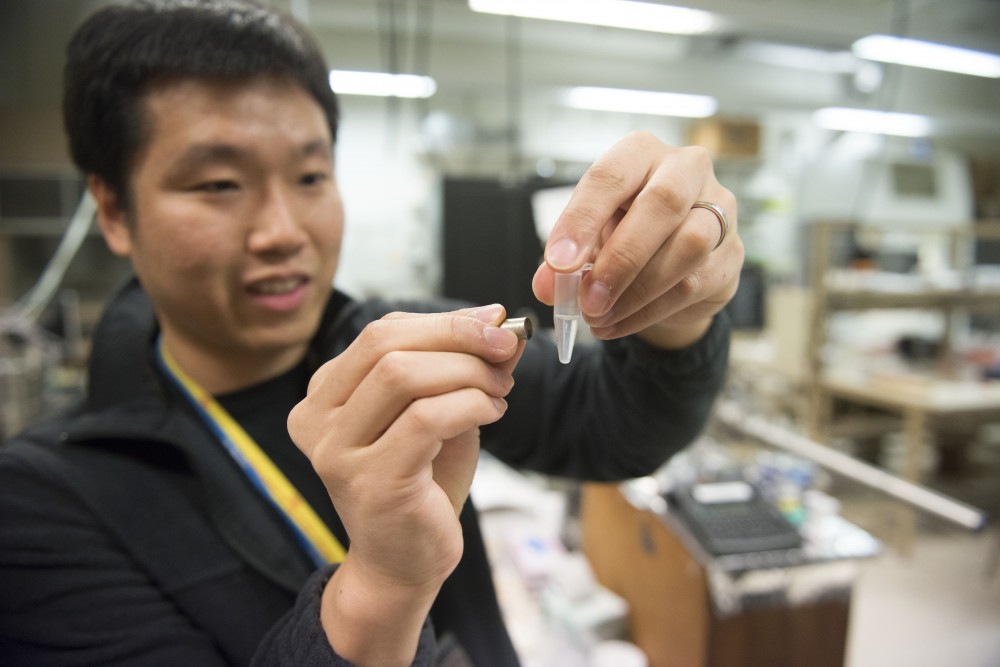From identifying disease-ridden cells to destroying tumors, University of Minnesota researchers are working on developing nanotechnology to enhance medical procedures.
Recent research from the University’s Department of Electrical and Computer Engineering focuses on using nanotechnology — such as microscopic wires or superheating tiny particles — in a wide breadth of biological research. A multi-departmental proposal submitted this month hopes to expand on nano-heating studies.
University researchers are looking at developing medical nanotechnology that could treat cancer through heat therapy using nanoparticles instead of chemotherapy.
“You can use heat therapy to treat a tumor, to direct a nanoparticle to get near or inside a cell or inside cancer cells,” said University transplant surgeon Erik Finger, who was part of the proposal. “Then apply radio frequency, magnetic fields, [and] you can heat kill … tumor cells and spare the rest of the cells around it.”
When organs for transplant are cryopreserved, they need to be warmed up. Finger is looking forward to heating transplanted organs efficiently and uniformly with rod-shaped nanoparticles.
“Each of those little [nanoparticles] generates heat, so it heats homogeneously and quickly, so it’s not like an ice cube in a microwave where you’re melting the outside while the center is still frozen,” Finger said.
Nanoparticle research is interdisciplinary, Finger said, involving mechanical engineering, materials sciences, chemistry and radiology.
“The applications of these kinds of things is way more than our little niche,” Finger said. “My little niche is I’m a transplant surgeon, so we want to be able to preserve organs so we can transplant them in the future.”
Other researchers aim to use nanoparticle radio-frequency identification microchips to label cells that have cancer or AIDS indicators, though research is in early stages.
“What was really fascinating is we were working on the potential concept of the tag itself, the fact that a nanostructure could be used potentially to create the tag,” said Rhonda Franklin, a University micro and nanostructures researcher.
Alongside Franklin, University nanoparticle researcher Bethanie Stadler has been integrating the development of nanoparticles and RFID. The use of nanoparticles as RFID microchips have been successful because of their easy uptake into cells.

“Cells internalize those wires because they are just small enough that cells, as they normally sample their environment, they just take them up,” Stadler said. “Even when they divide, there’s nanowires in both daughter cells.”
The accessibility of nanowires is important to their development, Stadler said, because using nanowires as labels could be done locally rather than an expensive trip to a major hospital.
“This is something that could be done in a clinic anywhere, it’s cheap and accessible,” Stadler said.
The greater implications of nanotechnology can give way to the development of a new industry, Franklin said.
“I would expect that outside of medicine, eventually they can come back into more traditional electronics and offer some capability there,” Franklin said. “The possibilities are really limitless at this point, it’s the imagination that’s the limit, not the options.”








